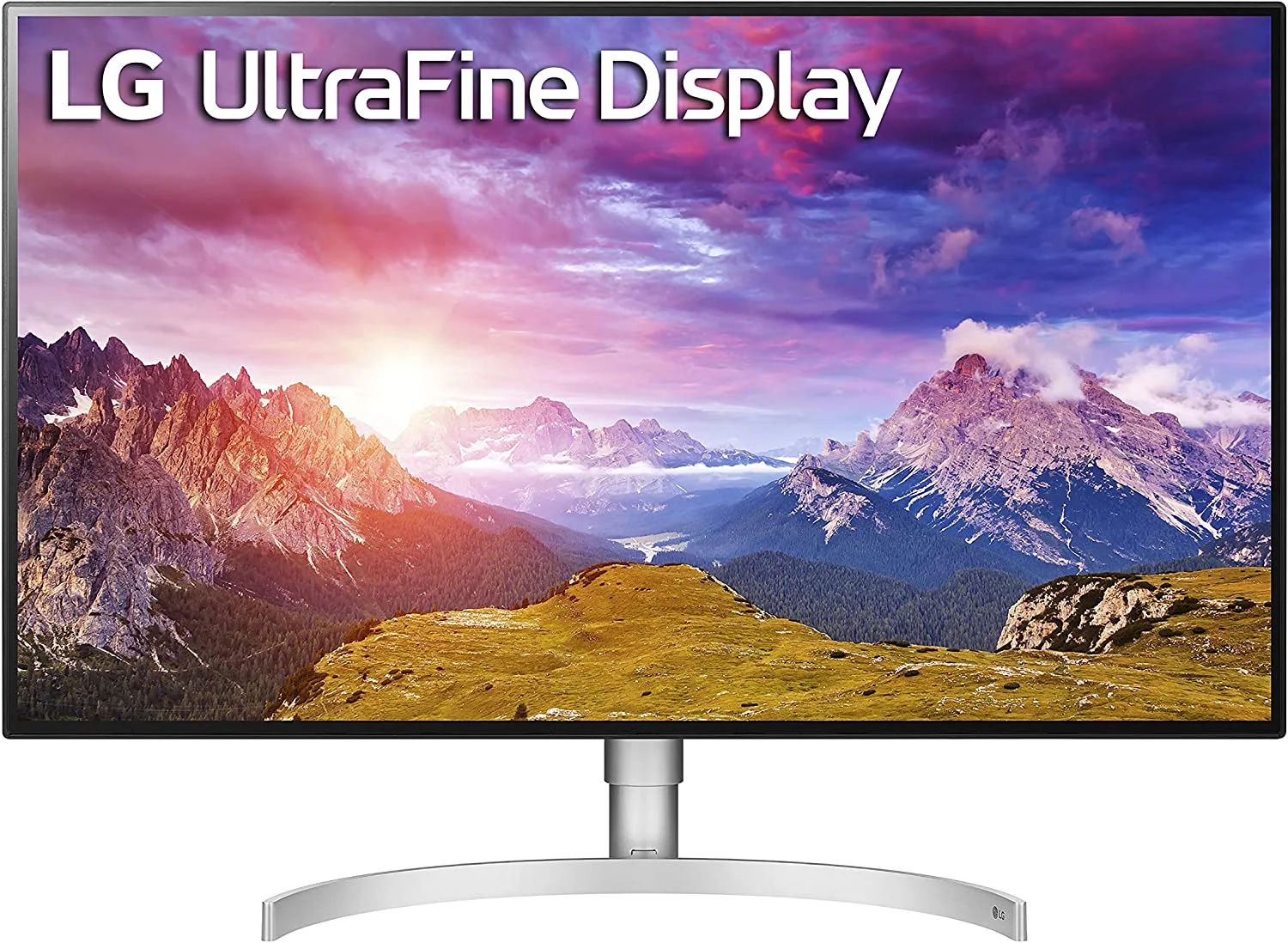Parent Article: The Best Monitors for Video Editing
As a video editor, you are well aware of the importance of a high-quality monitor.
Not only does it help you achieve the best results, but it also plays a crucial role in protecting your eyes from strain and fatigue.
With long hours spent in front of the screen, eye strain and fatigue can be a significant problem for video editors.
The right monitor can significantly reduce the risk of eye problems, and in this article, we'll explore how to choose the best video editing monitor to minimize eye strain and fatigue.
Table of Contents
- Eye strain and Fatigue for video editors?
- What features should you look for in a video editing monitor?
- Screen Size and Resolution
- Refresh Rate
- Brightness and Contrast
- Flicker-free and Low Blue Light
- Ergonomics
- Best Video Editing Monitors for Minimizing Eye Strain and Fatigue
- BenQ PD3200U
- Dell UltraSharp U2718Q
- LG 32UL950-W
- FAQs

Why is eye strain and fatigue a problem for video editors?
Before we delve into the best monitors for minimizing eye strain and fatigue, let's first understand why it is a significant problem for video editors.
Eye strain and fatigue can cause a range of symptoms, including dry or watery eyes, blurred vision, headaches, and neck or shoulder pain.
Video editors are particularly susceptible to eye strain and fatigue due to long hours spent staring at a screen and the brightness and contrast of the images.
Additionally, video editors may be exposed to flickering or blue light emitted by their monitors, leading to further eye strain and fatigue.
What features should you look for in a video editing monitor?
When choosing a video editing monitor to minimize eye strain and fatigue, consider the following features:
1. Screen Size and Resolution
The size and resolution of the screen are crucial factors to consider. A larger screen allows you to see more details and work more efficiently, while a higher resolution provides a clearer and more detailed image.
2. Refresh Rate
A higher refresh rate reduces motion blur, resulting in less eye strain and fatigue.
3. Brightness and Contrast
Choose a monitor with adjustable brightness and contrast, allowing you to adjust it to suit your workspace lighting conditions.
4. Flicker-free and Low Blue Light
Flicker-free and low blue light monitors can help to minimize eye strain and fatigue. Flickering can cause headaches and eye strain, while blue light can disrupt sleep patterns.
5. Ergonomics
Consider a monitor with adjustable height, tilt, and swivel options to reduce neck and shoulder strain.

Best Video Editing Monitors for Minimizing Eye Strain and Fatigue
Now that we've covered the features to look for let's look at some of the best monitors for minimizing eye strain and fatigue.
1. BenQ PD3200U

The BenQ PD3200U is a 32-inch monitor with a 4K resolution and a 60Hz refresh rate.
It features flicker-free technology and low blue light modes to minimize eye strain and fatigue.
The monitor also has an ergonomic design, allowing you to adjust the height, tilt, and swivel options.
See the BenQ PD3200U
2. Dell UltraSharp U2718Q

The Dell UltraSharp U2718Q is a 27-inch monitor with a 4K resolution and a 60Hz refresh rate.
It features a flicker-free screen and low blue light mode to reduce eye strain and fatigue.
The monitor also has an adjustable stand, allowing you to adjust the height, tilt, and swivel options.
See the Dell UltraSharp U2718Q
3. LG 32UL950-W

The LG 32UL950-W is a 32-inch monitor with a 4K resolution and a 60Hz refresh rate.
It features a flicker-free screen and low blue light mode to minimize eye strain and fatigue.
The monitor also has an ergonomic design, allowing you to adjust the height, tilt, and swivel options.
See the LG 32UL950-W
Minimizing Eye Strain FAQs
How long should I work on a monitor before taking a break?
It is recommended to take a 20-second break every 20 minutes and look at something 20 feet away to reduce eye strain.
Can I use a regular monitor for video editing?
While you can use a regular monitor for video editing, it may not have the necessary features to minimize eye strain and fatigue. Video editing requires a monitor with a high resolution, a high refresh rate, and an adjustable stand to ensure ergonomic comfort.
How can I reduce eye strain and fatigue while using a monitor?
You can reduce eye strain and fatigue by adjusting the monitor's brightness and contrast, using a flicker-free and low blue light monitor, taking frequent breaks, and adjusting the monitor's height, tilt, and swivel options.
Can eye strain and fatigue cause permanent damage?
Eye strain and fatigue can cause temporary discomfort, but it is unlikely to cause permanent damage. However, if left untreated, it can lead to more severe eye problems, such as dry eye syndrome.
Is it essential to have an ergonomic monitor?
Yes, an ergonomic monitor is essential for minimizing eye strain and fatigue. A monitor with adjustable height, tilt, and swivel options can reduce neck and shoulder strain and provide greater comfort during long hours of video editing.
Should I consider the monitor's color accuracy when choosing a video editing monitor?
Yes, color accuracy is an essential factor to consider when choosing a video editing monitor. A monitor with accurate colors ensures that the final output is consistent with the intended color scheme.
Can I use a TV as a video editing monitor?
While you can use a TV as a video editing monitor, it may not have the necessary features, such as a high refresh rate, to minimize eye strain and fatigue. Additionally, the color accuracy of a TV may not be suitable for video editing.
How can I adjust the monitor's brightness and contrast?
You can adjust the monitor's brightness and contrast through the monitor's settings menu or by using the physical buttons on the monitor.
Are there any software tools available to reduce eye strain and fatigue?
Yes, there are software tools available, such as f.lux and Night Shift, that adjust the color temperature of your monitor to reduce blue light emission.
Can I prevent eye strain and fatigue without using a specialized monitor?
While using a specialized monitor can significantly reduce eye strain and fatigue, you can also reduce it by taking frequent breaks, adjusting the monitor's brightness and contrast, and using software tools to reduce blue light emission.
Conclusion
As a video editor, you must choose the right monitor to minimize eye strain and fatigue. Consider a monitor with a high resolution, high refresh rate, flicker-free and low blue light modes, adjustable brightness and contrast, and an ergonomic design.
The BenQ PD3200U, Dell UltraSharp U2718Q, and LG 32UL950-W are some of the best monitors for minimizing eye strain and fatigue.
By taking steps to reduce eye strain and fatigue, you can work more efficiently and protect your eyes from long-term damage.
Remember to take frequent breaks, adjust the monitor's brightness and contrast, and use software tools to reduce blue light emission.
Investing in the right video editing monitor can significantly reduce the risk of eye problems, allowing you to focus on delivering the best results.

About the Author
Joseph Nilo has been working professionally in all aspects of audio and video production for over twenty years. His day-to-day work finds him working as a video editor, 2D and 3D motion graphics designer, voiceover artist and audio engineer, and colorist for corporate projects and feature films.
Video Monitors Related Posts
The Best Monitors Compatible with MacBook Pro
Best Monitors for Video Editing
Understanding Monitor Resolution and Its Impact on Video Editing
Calibrating Your Video Editing Monitor for Optimal Color Accuracy
The Benefits of Dual-Monitor Setups for Video Editing
Future-Proofing Your Video Editing Setup: Choosing a Monitor with Upgrade Potential
Minimizing Eye Strain and Fatigue with the Right Video Editing Monitor
How to Choose the Right Video Editing Monitor for Your Needs
What to Look for in HDR-Capable Video Editing Monitors
The Importance of Color Accuracy in Video Editing Monitors
IPS vs. TN Panels: Which is Better for Video Editing Monitors?
Video Editing Related Posts
Adobe Creative Cloud for Video Editing
Top 10 Video Editing Software for Mac
The Benefits of Dual-Monitor Setups for Video Editing
How to Choose the Right Video Editing Monitor for Your Needs
Best Monitors for Video Editing
Best Video Editing Software in 2023
Best Mac for Video Editing in 2023
(Almost) 50 Mistakes Every New Video Producer Makes
Breakthrough AI Tools: Elevate Your Video Production Game!
Table of Contents
- Eye strain and Fatigue for video editors?
- What features should you look for in a video editing monitor?
- Screen Size and Resolution
- Refresh Rate
- Brightness and Contrast
- Flicker-free and Low Blue Light
- Ergonomics
- Best Video Editing Monitors for Minimizing Eye Strain and Fatigue
- BenQ PD3200U
- Dell UltraSharp U2718Q
- LG 32UL950-W
- FAQs
Video Monitors Related Posts
The Best Monitors Compatible with MacBook Pro
Best Monitors for Video Editing
Understanding Monitor Resolution and Its Impact on Video Editing
Calibrating Your Video Editing Monitor for Optimal Color Accuracy
The Benefits of Dual-Monitor Setups for Video Editing
Future-Proofing Your Video Editing Setup: Choosing a Monitor with Upgrade Potential
Minimizing Eye Strain and Fatigue with the Right Video Editing Monitor
How to Choose the Right Video Editing Monitor for Your Needs
What to Look for in HDR-Capable Video Editing Monitors
The Importance of Color Accuracy in Video Editing Monitors
IPS vs. TN Panels: Which is Better for Video Editing Monitors?
Video Editing Related Posts
Adobe Creative Cloud for Video Editing
Top 10 Video Editing Software for Mac
The Benefits of Dual-Monitor Setups for Video Editing
How to Choose the Right Video Editing Monitor for Your Needs
Best Monitors for Video Editing
Best Video Editing Software in 2023
Best Mac for Video Editing in 2023
(Almost) 50 Mistakes Every New Video Producer Makes
Breakthrough AI Tools: Elevate Your Video Production Game!
